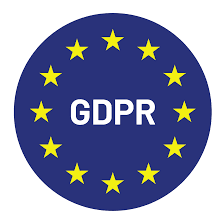Aug 1, 2025
In 2025, retailers are under immense pressure to deliver seamless, personalized, and profitable customer experiences - across every channel, in real time. Yet many still rely on tools built for yesterday’s world.
Enter the age-old debate: CDP vs. CRM. Both are buzzwords in retail tech. Both promise customer understanding. But they are not interchangeable, and choosing the right one can determine whether you grow or get left behind.
Let’s cut through the jargon and explore what matters most for retailers in 2025: what’s the difference, what’s changed, and what’s actually relevant now.
CRM: Built for Sales, Not Scale
Customer Relationship Management (CRM) systems were originally designed for sales teams - to track leads, manage contacts, and record communication. Over time, retailers began adapting CRMs to store loyalty data and send promotional emails.
But there are limitations:
CRMs store only known customer data (email, name, phone).
They are typically channel-specific, focusing on one-to-one communication like email or SMS.
They don’t offer real-time behavioral tracking or deep segmentation.
They can’t unify data across systems (POS, web, app, loyalty, in-store).
In short, CRMs work well for basic customer management. But in a world where consumers shop across five screens and demand contextual engagement, they often fall short.
CDP: Built for Unified, Real-Time Retail
Customer Data Platforms (CDPs) were purpose-built to help modern retailers unify, segment, and activate customer data at scale. Think of a CDP as the central nervous system of customer intelligence.
A retail-grade CDP can:
Ingest data from all channels - POS, apps, websites, kiosks, call centers, and more.
Resolve identities using AI and rules to create unified customer profiles.
Track real-time behavior and purchase intent.
Enable deep segmentation and personalization.
Push data to downstream systems: email, ads, SMS, in-store assistants, etc.
A CDP doesn’t just store data. It activates it.
2025 Reality Check: What Retailers Actually Need
With inflation pressures, rising customer acquisition costs, and fragmented consumer behavior, retailers in 2025 face a very specific set of challenges.
Personalize at Scale
Customers expect recognition and relevance in every interaction. Retailers need dynamic segmentation and behavioral triggers - not static email lists.
Bridge Online and Offline Journeys
Retailers can no longer treat their app, website, and stores as silos. A CDP stitches it all together.
Move from Campaigns to Journeys
CRMs support one-off blasts. CDPs power always-on journeys based on lifecycle stage, RFM scoring, churn risk, and more.
Measure Real Business Impact
Retailers must attribute revenue, track repeat purchases, and optimize campaigns based on sales data—not just email opens.
Act in Real Time
Cart abandoned? High-value items viewed repeatedly but not purchased? CDPs enable real-time nudges across channels.
When a CRM Is Still Useful
Despite the CDP’s strengths, a CRM still plays a role—particularly in retail sub-sectors like:
Luxury or high-ticket retail, where clienteling and relationship building is key.
B2B retail, where account managers handle portfolios.
Customer service, where support tickets and histories matter more than behavioral tracking.
But for everyday retail - groceries, fashion, convenience, department stores - a CRM alone is insufficient in 2025.
The Blurred Lines (and the Trap)
Here’s where it gets tricky. Many CRM vendors now claim CDP-like features. And some CDPs are adding CRM-like workflows. This blurred positioning confuses retailers.
The result? Chains buy “CRM-CDP hybrids” that do neither well.
If you’re a retailer evaluating solutions in 2025, ask yourself:
Can the platform ingest real-time data across web, app, store, and POS?
Can it resolve anonymous to known behavior and stitch unified profiles?
Does it offer predictive segmentation (like next best product, churn risk)?
Can you push triggers across multiple channels in real time?
If the answer is no, it’s not a CDP - it’s a CRM with marketing features.
Case in Point: GCC Fashion Retailer vs. Indonesian Supermarket
Fashion Retailer in UAE
This mid-sized fashion chain was running SMS campaigns through a CRM but couldn’t track whether messages converted. Once they implemented a CDP, they unified online browsing data, loyalty activity, and purchase history. Now, if a shopper views three abayas without buying, a tailored WhatsApp reminder is sent within two hours. The result: a 3x lift in conversion.
Supermarket Chain in Indonesia
The retailer had thousands of loyalty members, but only email and purchase data. After integrating a CDP, they began tracking app behavior, store visit frequency, and RFM scores. This enabled real-time journey automation aligned with seasonal shopping windows. Result: a 15% rise in repeat visits during the promotional period.
2025 Recommendation: CRM + CDP = Smart Stack
You don’t need to choose between a CDP and a CRM. In fact, they’re complementary.
Use the CDP as the intelligence layer. It should unify data, power segmentation, and activate journeys.
Use the CRM for one-to-one interactions, clienteling, or customer service.
The modern retail stack in 2025 should look like this:
POS/App Data → CDP → Segments & Insights → CRM + Marketing Channels
CDP drives the intelligence. CRM handles the human touch.
Conclusion: Build for the Journey, Not Just the Contact
2025 retail is no longer about managing customer lists. It’s about understanding and responding to customer behavior in real time, across every channel.
A CRM helps you manage relationships.
A CDP helps you understand and activate those relationships.
For most retailers—especially in fast-moving sectors like grocery, fashion, and convenience—a CDP is not a luxury anymore. It’s the foundation.
And in a world where customers expect personalization, speed, and relevance, those who invest in a CDP-led strategy today will be the ones winning loyalty tomorrow.
Want to explore what a CDP-led transformation looks like for your retail chain?
At Loyalytics, we help retailers across the GCC and Southeast Asia unify data, launch high-impact campaigns, and drive measurable business outcomes. Let’s talk.











